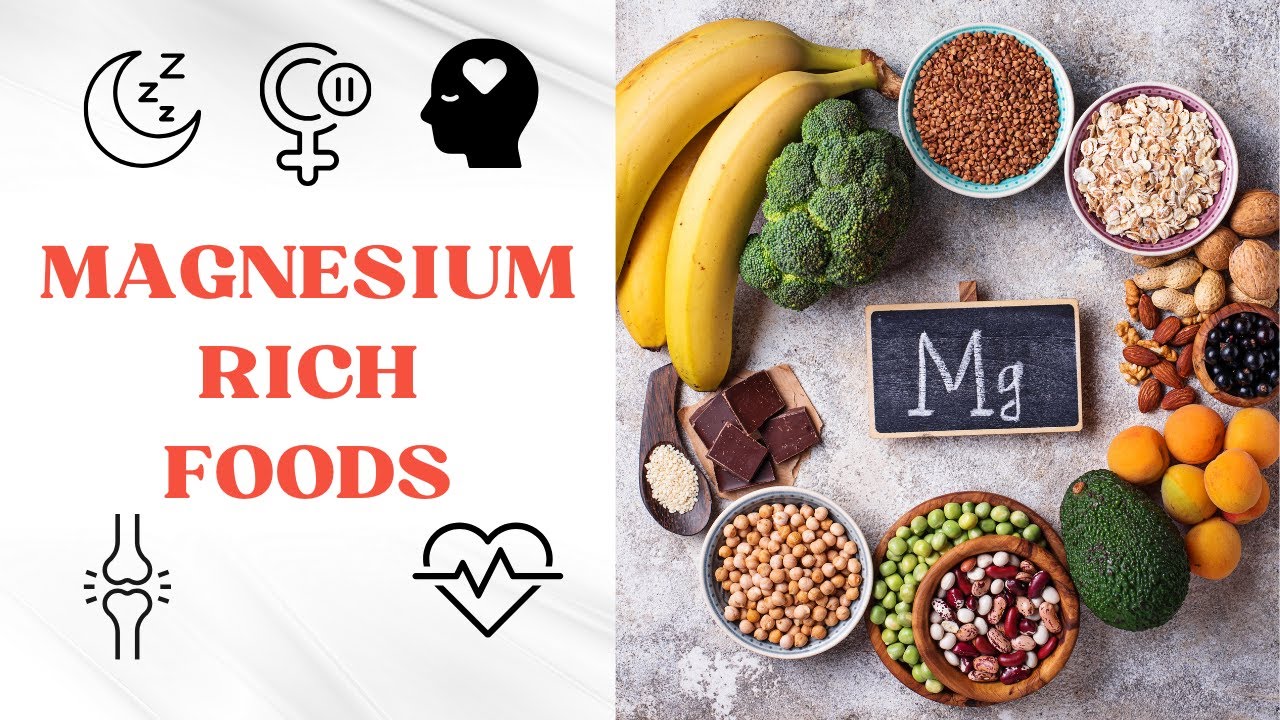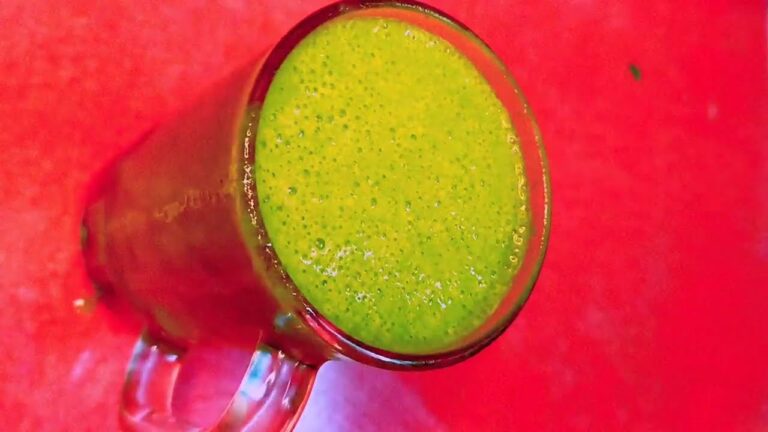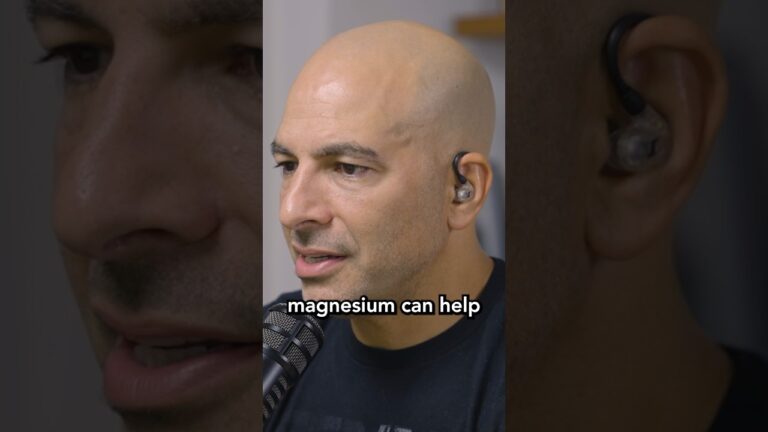Tips for Incorporating Magnesium-Rich Foods into Your Daily Meals
Feeling tired or struggling with muscle cramps? Your body might be telling you it needs more magnesium. This essential mineral supports over 300 biochemical reactions in your body but many people don’t get enough of it.
Adding magnesium-rich foods to your meals can help improve your energy levels, sleep quality, and even reduce stress.

Looking for simple ways to boost your magnesium intake? The good news is that many delicious foods are packed with this vital nutrient.
Leafy greens, nuts, seeds, and whole grains all provide excellent sources of magnesium that can easily fit into your everyday eating habits. Even dark chocolate contains significant amounts of magnesium, giving you a perfect excuse to enjoy a small square as an occasional treat.
Understanding The Importance Of Magnesium

Magnesium is an essential mineral that powers many crucial bodily functions. Your body relies on this nutrient for everything from energy production to muscle movement.
Health Benefits Of Magnesium
Magnesium serves as a cofactor in more than 300 enzyme systems that regulate diverse biochemical reactions. These reactions are vital for your daily functioning and overall health.
Your muscles and nerves depend on magnesium to work properly. Without sufficient amounts, you might experience muscle cramps or irregular heartbeat.
Blood pressure regulation is another key benefit of adequate magnesium levels. This mineral helps your blood vessels relax, potentially supporting healthier blood pressure readings.
Magnesium also plays a crucial role in:
- Blood sugar regulation
- Protein synthesis
- Energy production
- Bone formation
Your heart, bones, muscles, and nerves all require magnesium to function optimally. When your diet lacks this mineral, these systems may not operate efficiently.
Magnesium’s Role In Sleep And Wellness
Magnesium contributes significantly to your sleep quality and overall sense of wellness. Many people find that proper magnesium levels help them fall asleep faster and stay asleep longer.
This mineral helps regulate neurotransmitters that calm your nervous system. By promoting relaxation, magnesium may reduce stress and anxiety that interfere with restful sleep.
Your mood can also benefit from adequate magnesium intake. Some research suggests that magnesium deficiency may contribute to feelings of depression or irritability.
Magnesium supports muscle relaxation, which can reduce nighttime leg cramps that disrupt sleep. This relaxation effect extends to your mind, potentially calming racing thoughts that keep you awake.
For overall wellness, maintaining proper magnesium levels helps your body manage stress more effectively. This mineral acts as a natural relaxant, supporting your body’s response to daily challenges.
Identifying Magnesium-Rich Foods

Magnesium plays a crucial role in over 300 bodily functions, yet many people don’t get enough of this essential mineral. Knowing which foods contain high amounts of magnesium can help you boost your intake naturally through everyday meals.
Common Foods High In Magnesium
Dark leafy greens top the list of magnesium powerhouses. Just half a cup of boiled spinach provides 78 mg of magnesium, making it an excellent choice for increasing your intake.
Nuts and seeds are particularly concentrated sources. One ounce of pumpkin seed kernels contains a whopping 168 mg of magnesium, while the same amount of dry roasted almonds provides 80 mg.
Legumes deserve a spot on your plate too. Soybeans, baked beans, lentils, and peanuts all offer substantial amounts of this mineral. They make versatile additions to many dishes and can help you reach your daily magnesium goals.
Whole grains are another reliable source. Try incorporating more oats, brown rice, and whole wheat products into your meals.
Lesser-Known Sources Of Magnesium
Beyond the usual suspects, several unexpected foods can boost your magnesium intake. Avocados aren’t just trendy—they’re magnesium-rich too. Adding half an avocado to your sandwich or salad gives you a notable magnesium boost.
Fish lovers will be pleased to know that certain seafood varieties contain impressive amounts of magnesium. Mackerel, salmon, and halibut are particularly good options that provide multiple nutritional benefits alongside magnesium.
Some fruits contain surprising amounts of this mineral. Bananas get attention for potassium, but they contain magnesium too. Dried fruits like figs and prunes offer concentrated amounts and make convenient snacks.
Dark chocolate deserves special mention—it’s one of the more enjoyable ways to increase your magnesium intake. Just an ounce of dark chocolate with 70-85% cocoa provides a significant amount of magnesium.
Practical Tips For Integrating Magnesium-Rich Foods

Adding magnesium to your daily meals doesn’t have to be complicated. With a few simple swaps and additions, you can boost your intake of this essential mineral without overhauling your entire diet.
Breakfast Ideas
Start your day with a magnesium boost by incorporating pumpkin seed kernels into your morning routine. Just one ounce provides a whopping 168 mg of magnesium.
Try these quick breakfast upgrades:
- Sprinkle almonds or pumpkin seeds over yogurt or oatmeal
- Add spinach to your morning omelet
- Spread avocado on whole grain toast (a medium avocado contains 14% of your daily magnesium needs)
- Prepare overnight oats with almond milk, chia seeds, and a banana
Don’t forget about whole grain cereals and breads. They’re not just convenient but also pack a good magnesium punch when compared to their refined counterparts.
Even a simple smoothie with banana, spinach, and almond butter can deliver a significant portion of your daily magnesium requirements.
Lunch Options
Transform your midday meal into a magnesium powerhouse with these practical ideas.
Simple Salad Boost: Start with a base of dark leafy greens like spinach or kale. Add roasted almonds (80 mg of magnesium per ounce), avocado slices, and black beans.
Try these lunch magnesium boosters:
- Swap white rice for brown rice or quinoa in bowls
- Add chickpeas or black beans to your salads and wraps
- Include avocado in your sandwich fillings
- Choose whole grain bread instead of white
Soups made with beans, lentils, and plenty of vegetables make excellent magnesium-rich lunch options. A simple lentil soup with spinach can be prepared ahead and provides plenty of this essential mineral.
For a quick option, try a wrap with hummus, leafy greens, and sliced avocado.
Dinner Recipes
Evening meals offer plenty of opportunities to incorporate magnesium-rich foods.
Easy Magnesium-Boosting Swaps:
- Serve salmon or mackerel with a side of steamed spinach
- Use quinoa or brown rice instead of white rice
- Add tofu or legumes to stir-fries
- Include dark leafy greens as side dishes
Try this simple magnesium-rich dinner: Baked salmon with roasted brussels sprouts and a side of quinoa. Both the fish and the quinoa provide excellent magnesium content.
For vegetarian options, consider bean-based dishes like black bean enchiladas or chickpea curry. Legumes are outstanding sources of magnesium and protein.
Don’t forget about herbs and spices! Basil and coriander add flavor while contributing to your magnesium intake.
Snacks And Smoothies
Between-meal options offer perfect opportunities to boost your magnesium intake with minimal effort.
Quick Magnesium-Rich Snacks:
- A handful of pumpkin seeds or almonds
- Apple slices with almond butter
- Greek yogurt topped with seeds and berries
- Dark chocolate squares (70%+ cacao)
Dark chocolate isn’t just delicious—it’s also a surprising source of magnesium. Just one ounce of dark chocolate (70-85% cacao) provides about 65 mg of magnesium.
For smoothies, create a base with spinach or kale then add banana, almond milk, and a tablespoon of almond butter for a magnesium-packed drink. Add a sprinkle of chia or hemp seeds for an extra boost.
For a refreshing option, try a smoothie with avocado, banana, spinach, and almond milk. This combination provides multiple magnesium sources in one delicious drink.
Creative Recipe Ideas

Adding magnesium-rich foods to your meals can be both delicious and nutritious. These recipes make it easy to boost your magnesium intake throughout the day without sacrificing flavor or requiring complicated cooking techniques.
Magnesium-Packed Breakfast Recipes
Start your day with a nutrient-rich breakfast by trying a spinach and feta omelet. Simply whisk 2 eggs, pour into a hot pan, add a handful of dark leafy greens, and sprinkle with feta cheese. The spinach provides magnesium while the eggs offer protein.
Another quick option is a banana-avocado smoothie. Blend 1 banana, half an avocado, 1 cup of almond milk, and 1 tablespoon of pumpkin seeds for a creamy, magnesium-rich breakfast on the go.
For a make-ahead option, try overnight oats with a twist. Mix ½ cup oats with almond milk, then top with sliced banana, a sprinkle of cocoa powder, and chopped nuts in the morning. Both the oats and cocoa are excellent magnesium sources.
Magnesium-Rich Lunch And Dinner Recipes
For a simple lunch, prepare a black bean and quinoa bowl. Both ingredients are magnesium powerhouses. Top with avocado slices and pumpkin seeds for an extra boost.
Try a salmon and spinach dinner with a side of brown rice. Brush salmon with olive oil, season with herbs, and bake until flaky. Serve with sautéed spinach and brown rice for a triple dose of magnesium.
Quick Magnesium-Rich Pasta:
- 8 oz whole wheat pasta (cooked)
- 2 cups fresh spinach
- ¼ cup toasted pine nuts
- 2 tbsp olive oil
- Freshly grated parmesan
- Salt and pepper to taste
Simply toss all ingredients together while the pasta is hot. The whole grains and greens provide substantial magnesium in this 15-minute meal.
Delicious Magnesium-Boosting Snacks And Desserts
For a quick snack, make trail mix with almonds, cashews, pumpkin seeds, and a few dark chocolate chunks. All these ingredients are excellent magnesium sources. Dark chocolate is particularly rich.
Yogurt parfaits offer another tasty option. Layer Greek yogurt with pumpkin seeds, sliced banana, and a drizzle of honey for a sweet and satisfying snack.
For a magnesium-rich dessert, try avocado chocolate mousse. Blend one ripe avocado with 3 tablespoons of cocoa powder, 2 tablespoons of honey, and a splash of vanilla. The combination of avocado and cocoa creates a velvety dessert that’s packed with magnesium.
Energy balls are perfect for on-the-go snacking. Mix 1 cup of dates with ½ cup each of almonds and pumpkin seeds in a food processor. Then, form into balls and refrigerate. They keep for a week and provide a quick magnesium boost between meals.
Balancing Your Diet For Optimal Magnesium Intake

Getting enough magnesium requires more than just adding a few foods to your diet. It’s about creating a balanced approach that considers how nutrients work together. You also need to plan meals that make healthy eating easier.
Combining Magnesium-Rich Foods With Other Nutrients
Magnesium works best when paired with other nutrients. Vitamin D helps your body absorb magnesium more effectively. So, try combining magnesium-rich foods with some sunshine or vitamin D-rich foods like fatty fish.
Calcium and magnesium have a special relationship too. They need to be balanced, with a ratio of about 2:1 (calcium to magnesium). Too much calcium can actually interfere with magnesium absorption.
Consider these powerful combinations:
- Spinach salad with salmon and almonds (magnesium + vitamin D + healthy fats)
- Whole grain toast with avocado and pumpkin seeds (magnesium + B vitamins + fiber)
- Yogurt parfait with almonds and dark chocolate pieces (calcium + magnesium)
Protein helps your body use magnesium effectively too, so include lean proteins alongside your magnesium sources at meals.
Avoiding Common Dietary Pitfalls
Several everyday habits can secretly drain your magnesium levels. High alcohol consumption, excessive caffeine, and sodas containing phosphates can all reduce your magnesium absorption.
Processed foods usually contain very little magnesium. The refining process strips grains of up to 80% of their magnesium content. Choose whole grains instead of refined versions.
Too much sodium can increase magnesium excretion through urine. Cut back on salt and focus on herbs and spices for flavor instead.
Sugar is another culprit—it requires magnesium for metabolism, essentially “using up” your stores. Watch out for hidden sugars in packaged foods and beverages.
Stress depletes magnesium too. During stressful periods, be extra mindful to increase your intake of magnesium-rich foods like leafy greens and nuts.
Tips For Meal Planning And Preparation
Plan meals around magnesium powerhouses. Start by including at least one high-magnesium food in each meal.
Pumpkin seeds make great snacks or salad toppers with 168mg per ounce.
Prep magnesium-rich foods in advance:
- Wash and store spinach for quick salads and smoothies
- Toast nuts and seeds for grab-and-go snacks
- Cook quinoa or brown rice in batches for easy meal additions
Cooking methods matter too. Boiling can leach magnesium into water, so steaming or quick-sautéing vegetables helps retain more nutrients.
Try magnesium-focused meal prepping one day a week. Prepare containers with cooked beans, roasted almonds, and leafy greens that you can quickly assemble into meals.
Create a “magnesium boost station” in your kitchen with nuts, seeds, and dried fruits that you can sprinkle onto yogurt, oatmeal, or salads for an instant nutrient upgrade.






